There are numerous ways that are commonly known to reduce carbon dioxide emissions:
- reducing fossil fuel usage;
- engaging in renewable energies such as solar or wind power;
- reducing, reusing and recycling everyday items;
- driving a fuel-efficient or alternative energy car;
- using energy-saving electronics, and others.
consumption in generating one kilo of food in US
animal-based agriculture
1 kg of meat | Water (liter) |
Beef | 1,000,000 |
Chicken | 3,500 |
Soybean | 2,000 |
Rice | 1,912 |
Wheat | 900 |
Potato | 500 |
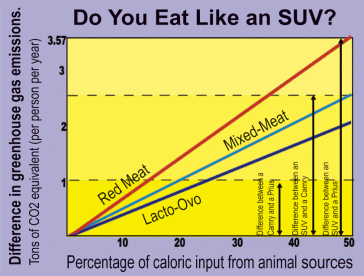
(Source: http://www.godsdirectcontact.org.tw/eng/news/194/ht_32.htm)
In a press conference on January 15, held by the Intergovernmental Panel on Climate Change (IPCC), the head of the IPCC, Dr. Pachuari warned that if the human race doesn’t act now, “climate change will have serious impacts.” He also clearly stated that the way to halt climate change is to stop eating meat, and make a change to a greener lifestyle.
The United Nations’ report on livestock and the environment published in 2006 revealed that, “The livestock sector emerges as one of the top two or three most significant contributors to the most serious environmental crisis, at every scale from local to global.” Almost a fifth (20 percent) of carbon emissions come from livestock - that’s more emissions than from all of the world’s transportation combined!
Industrialized animal-based agriculture is “astonishingly” the main cause of environmental destruction and greenhouse gas emissions.
Raising animals for food is one of the largest sources of carbon dioxide and the single largest source of both methane and nitrous oxide emissions. The livestock sector accounts for 9 percent of carbon dioxide, 65 percent of nitrous oxide and 37 percent of methane produced from human-related activities. Both methane (20 times) and nitrous oxide (296 times) are considerably more potent greenhouse gases than carbon dioxide. Livestock also generates 64 percent of human-related ammonia, which contributes to acid rain.
It is also a major source of land and water damage and pollution. Livestock currently use 30 percent of the Earth’s land surface, and even more land and water is used to grow the feed for livestock. According to Mr. Steinfeld, the senior author of the Food and Agriculture Organization report, Livestock’s Long Shadow–Environmental Issues and Options, livestock is the “major driver of deforestation … some 70 percent of former forests in the Amazon have been turned over to grazing.” In addition, animal-based agriculture causes land degradation. About 20 percent of pastures are degraded through overgrazing, compaction and erosion. It is also responsible for vast water consumption and pollution. In the USA alone, trillions of gallons of irrigation water is used to grow crops to feed animals annually. This is about 85 percent of the USA’s fresh water resources. Animals also generate excessive amounts of biological waste for the ecosystem to take.
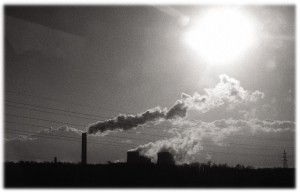

 http://www.lovinghut.com/
http://www.lovinghut.com/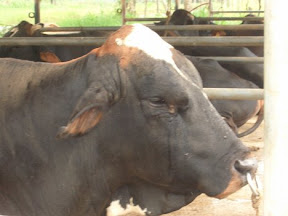 Meat or vegetables? Independent online (SA)
Meat or vegetables? Independent online (SA)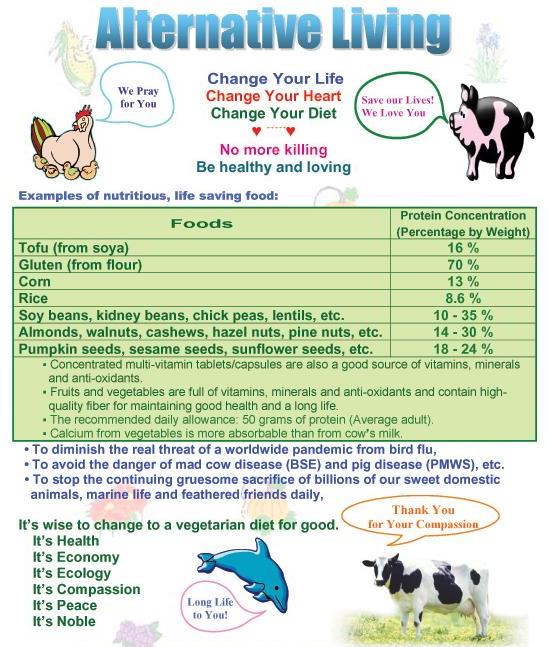
 Vegetarian Shoes And Bags
Vegetarian Shoes And Bags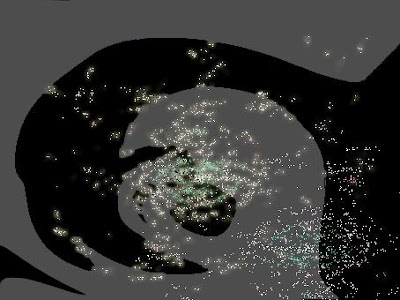 Which Stars Are You From?
Which Stars Are You From?


1 comment:
I think Vegetarian Shoes and Bags
http://www.vegetarianshoesandbags.com/
is by far, one of the best vegan shoe sites out there.
People really need to check them out!
Post a Comment